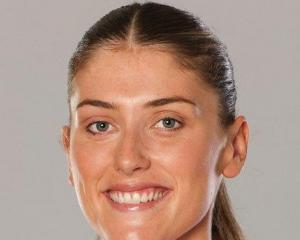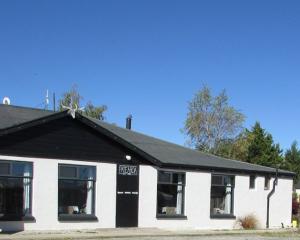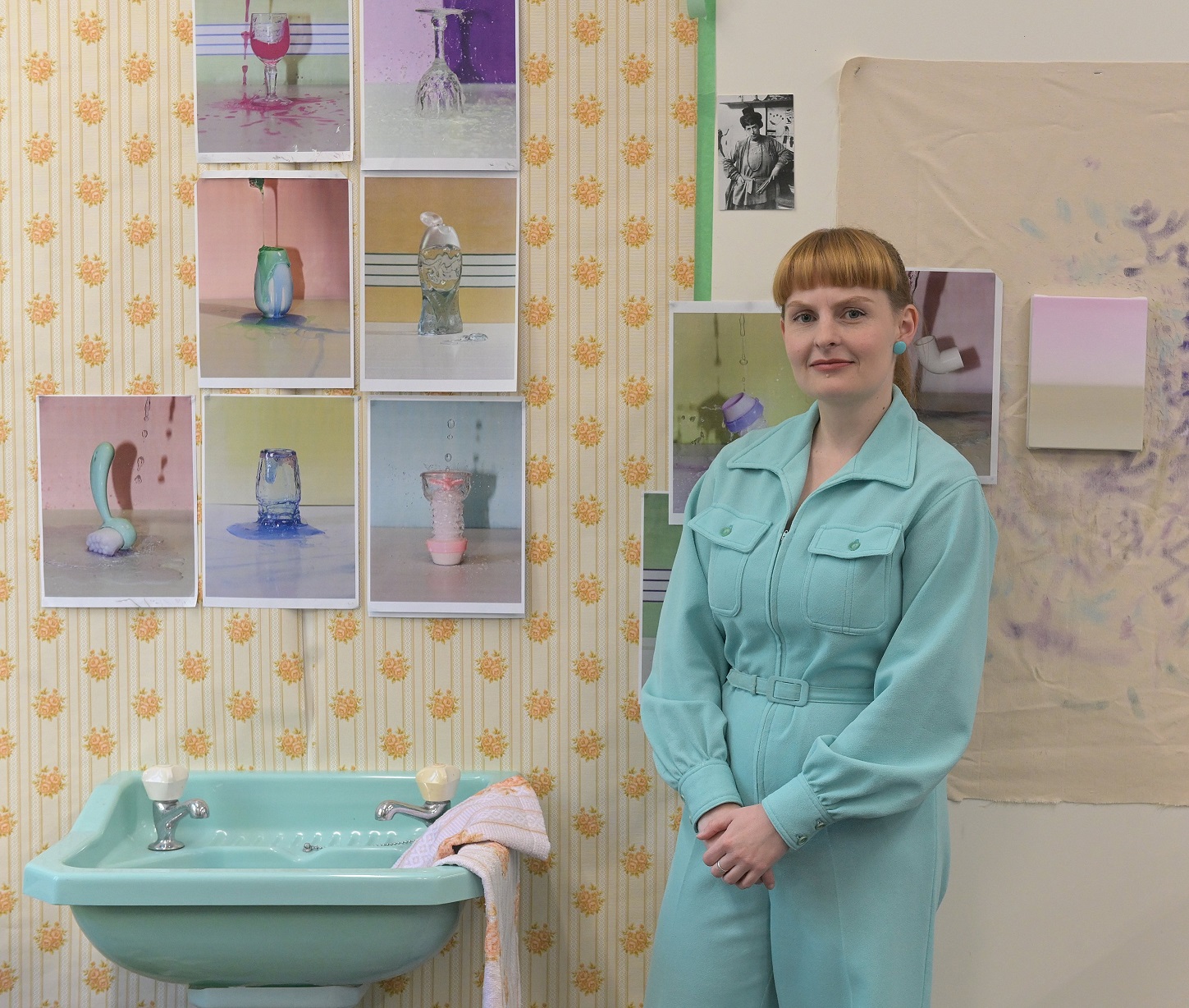
In her mint vintage jumpsuit Emily Hartley-Skudder is the perfect match for the mint pedestal vanity set up in the corner.
Neither looks out of place when across the room is a pink vanity, propped up on a nearby wall is a ’70s deep red swirl bathroom counter top, sitting on a box below is a pink scalloped basin and decorating the floor is a carpet rug reminiscent of heritage bus seat upholstery.
Along with containers and boxes filled with plastic finds stacked up in corners and under tables, these are all "tools" of Hartley-Skudder’s work and her inspiration — objects related to feminine hygiene and cosmetics and early bathroom ceramics and soaps.
Hartley-Skudder is slowly moving in to the Frances Hodgkins studio, unpacking box after box of treasures carefully transported first by container from her old home and studio in Wellington to the Ashburton property of her partner’s mother and then driven south.
"I’d been in my studio for six years, so there was a lot of stuff, because my practice involves a lot of collecting.
"It started off with miniatures but it has expanded to heaps of colourful plastics and now also bathroom ceramics and carpet."
The move south for the 12-month fellowship has highlighted how many treasures Hartley-Skudder has and meant she is now seriously considering paring back her searches of second-hand internet sites and op-shops to concentrate of the finds she already has.
"Moving everything has been such a big ordeal, I realised that maybe I should slow down the collecting and resolve some things.
"Sometimes you have cut your losses and let go.
"It is hard, as you never know what you might need."
That still gives her plenty of scope and she has plans to build on it with finds from the Hocken Collections, especially its ephemera collection.
Investigating the Hocken Collections is something she did not get to do when last in Dunedin just before lockdown in 2020.
Then she was putting together an exhibition at the Dunedin Public Art Gallery in response to eight recent acquisitions from the gallery’s contemporary collection: sculptures by Michael Parekowhai, Fiona Connor, Nick Austin and Erica van Zon, video works by Kawita Vatanajyankur and Steve Carr, a photograph by Yvonne Todd and a painting by Kushana Bush.
"That was the first time I’d spent any time in Dunedin.
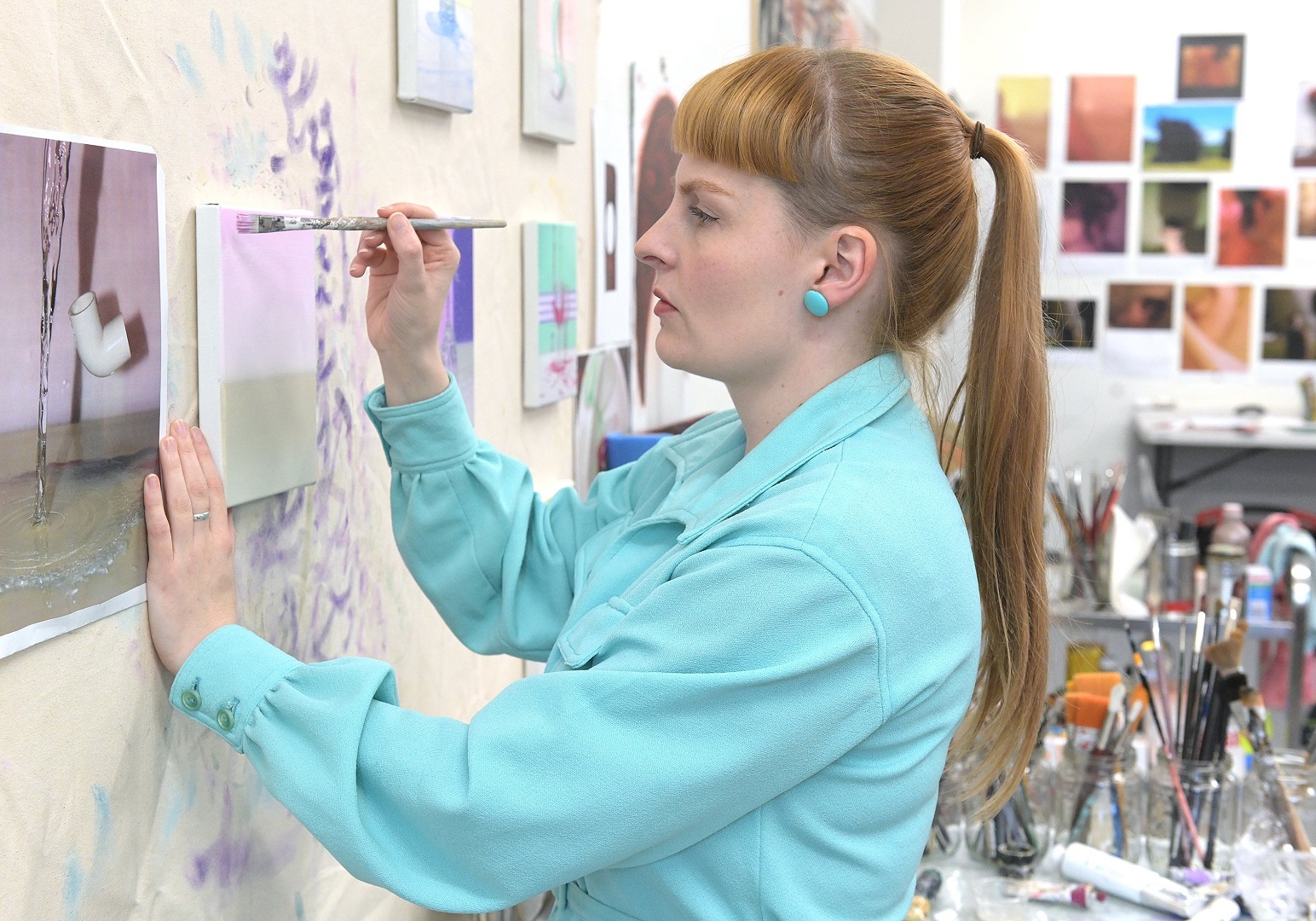
She also describes it as being a "pivotal moment" in her career as she gained experience in how to engage with other works in her own practice.
"It’s an exciting way to to challenge yourself and our practice."
It led to a collaboration with artist Heather Straka, a former Frances Hodgkins Fellow (2008), which has just been exhibited at Jonathan Smart Gallery in Christchurch.
"It’s been a really interesting and challenging project in some ways but also really nourishing to work with someone, to have someone to bounce ideas off and also who has done the fellowship."
In the project Hartley-Skudder created the environments for Straka’s paintings to sit within.
The pair talked about the mystery behind historical buildings that had burnt down.
Straka had been looking at the Cafe Continental on Sumner Beach, built in 1906 for people coming to the World Fair, which burnt down two and a-half years later.
They also bonded over a fondness for the film The Shining.
"She was thinking about old haunted buildings. I was looking at the bathroom decor and carpets. It was so stunning.
"That was the starting point."
Hartley-Skudder took inspiration for the colours in her installations from the film, especially the "spring green" and ochre detailing.
"We wanted to recreate this sense of a hotel."
She recreated one of the scenes where a wave of blood gushes out of the lift doors, combining it with a red Axminster carpet she found on her last visit to Dunedin.
She also reused the chaise lounge from her DPAG show in the reception room of the "hotel".
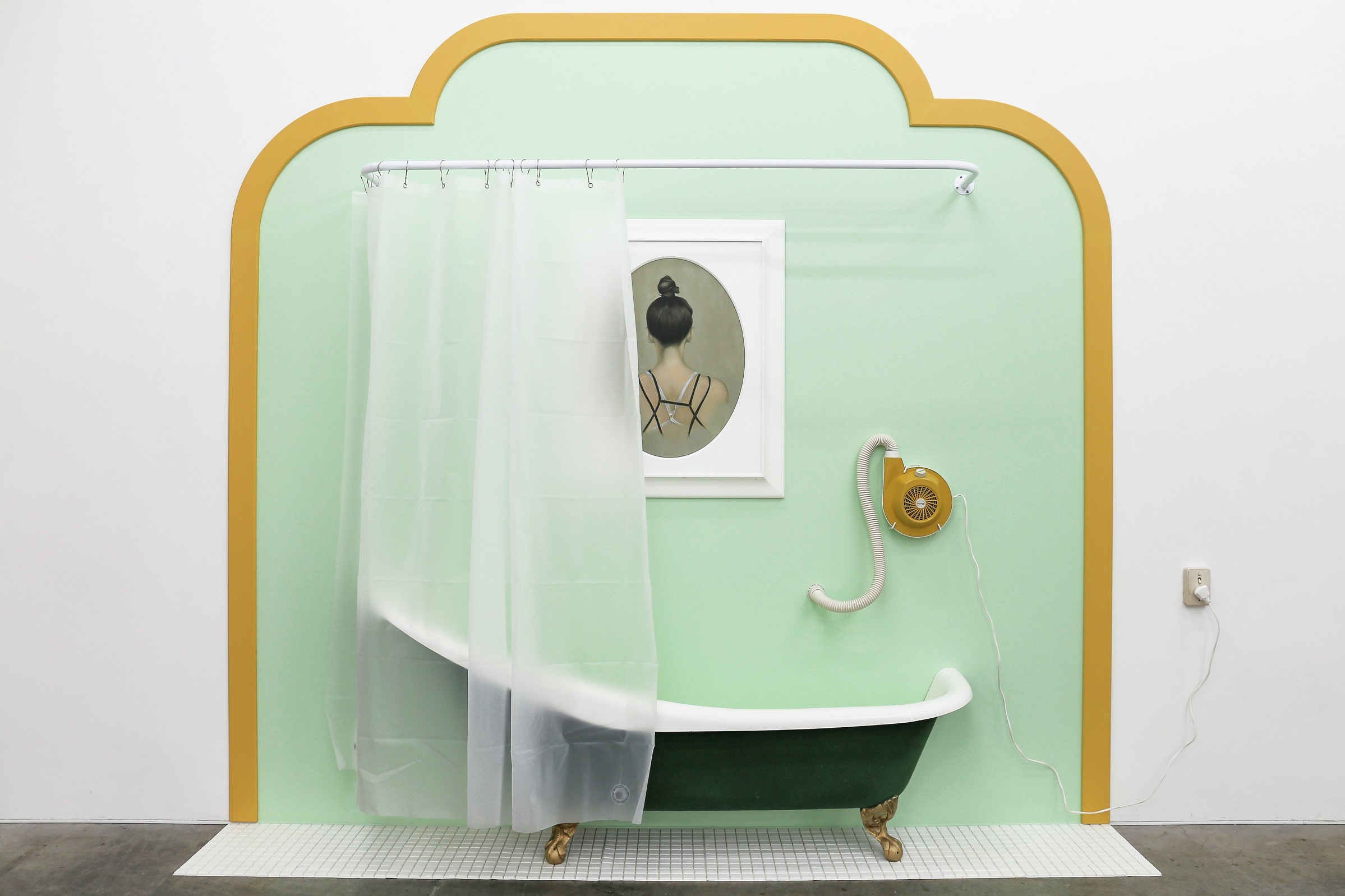
"It seems to have been super popular in Dunedin.
"It’s a strange mash up of iconic scenes from the film mixed with recognisable Axminister carpet."
She also created a 3D bathroom "painting", cutting in half a fibreglass replica claw-foot bathtub, which she attached to the wall with one of Straka’s paintings hanging above, slightly obscured by the shower curtain, evoking the horror movie trope in Psycho.
"There are a lot of little references — you didn’t need to get them to enjoy the work."
There is even a bathroom where a portrait Straka painted of Hartley-Skudder hangs on a wall covered by wallpaper she found on the internet.
"A lot of her portraits are kind of ghost-like. It’s almost like my evil twin.
"It’s such a playful show — lots of interesting conversations happening."
It is also influencing her fellowship show next year at the Hocken, where Hartley-Skudder is looking to include works from its collections.
"It has been a real shift to working with collections in that way. That is what I’d like to build on some more as well.
"Being able to bring some historical works alongside installation objects and paintings will be a great chance to create a really interesting dialogue."
She has already been looking at the Hocken’s old wallpaper samples, bound in beautiful books with watercolour illustrations of how a room could look and fold-out cards to place different samples behind, samples of linoleum and old women’s magazines from the 1960s and 1970s to see how the advertising targeted at women changes.
Early manufacturing of bathroom suites is something she hopes to look into.
"I’m getting exciting about the possibilities. I’ve just scratched the surface."
Part of her work is her own painting.
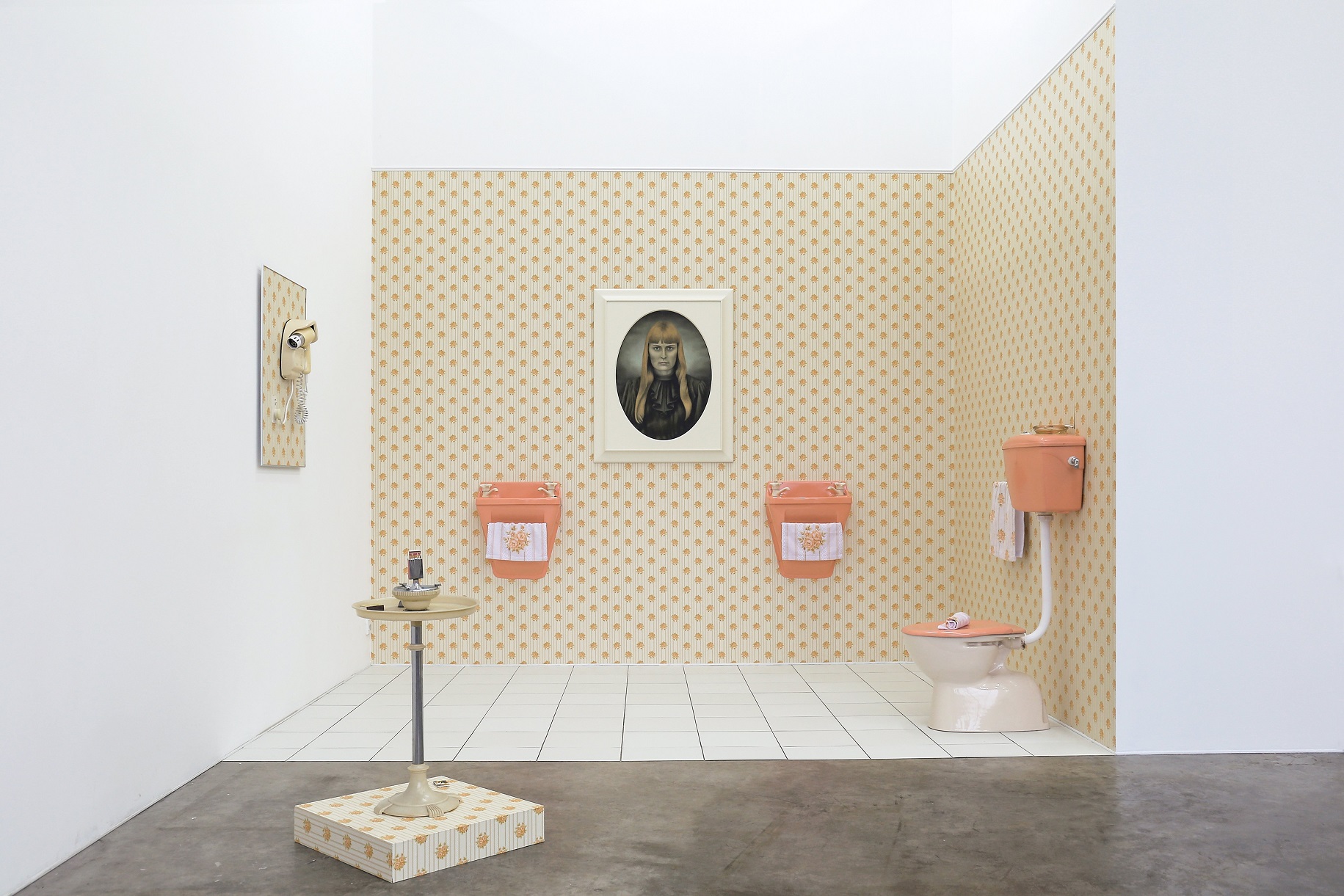
She begins by arranging the items and photographing them in different lights and backdrops until she is happy with an image. The image is then translated in paint.
In her studio, above the green vanity hangs vintage wallpaper, with her photographs, and next to it her works in progress, featuring liquids frozen in time.
"In my latest series I’ve been splashing water and different liquids and using flash photography to freeze the water and then painting that using a lot of pastels and bright colours, thinking back to the less-conservative bathroom decor of yesteryear."
Being awarded the fellowship is very special to Hartley-Skudder.
Not only does she get paid to be an artist for a year and get a studio that is five or six times larger than her Wellington one, she also has access to University of Otago resources and past fellows.
"It was a huge surprise when I got the phone call.
"It’s a huge shift physically for me coming from Wellington, but also the mindset — not having to worry about money for a time opens up what you are able to think about."
She has been enjoying walking around Dunedin taking in the architecture of the city.
She has been surprised by the different styles of domestic homes built over different eras.
"There is really old ones, the
’40s brick homes, the little worker cottages, but what I’ve really noticed is all the embellishments, the decorative elements that are around awnings and frontages.
"People seem to paint their houses bright colours and fun colour schemes, so it’s not as conservative, which is great."
Already four months into the fellowship she is aware of time passing quite quickly.
"I’m trying not to feel the pressure of that, instead channelling it into productivity."




